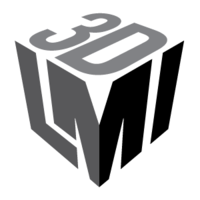Now engineers can achieve advanced pattern matching to locate unique features from 2D or 3D scan data.
The new Surface Pattern Matching tool in Gocator® software leverages powerful contour-based pattern matching capability to locate arbitrary features with sub-pixel accuracy based on either:
• 2D contrast (intensity) data
• Or 3D shape (height) data
Each pattern the tool locates establishes XY location and orientation and is the opening step used in most vision applications.
The core benefit of Surface Pattern Matching is that it allows you to find one or more instances of a pattern simultaneously in a single scan cycle. This is especially useful when scanning complex parts or surface features that have multiple patterns of interest, such as the keys on a keyboard.
On the keyboard, we want to locate three discrete master patterns simultaneously.
These master patterns are:
• Small key
• Standard key
• Large spacebar key

To set up a model for each key, we simply apply a bounding box to capture the contours of one of the keys, click to open the Operations function and Create a model for that key.

Note that the models are created using three separate instances of the Surface Pattern Matching tool. Each one can be pinned to the data viewer, allowing you to see all of them at once. The Surface Pattern Matching tool then identifies pattern matches in the scan data using all three patterns simultaneously.

The Surface Pattern Matching tools can locate one or multiple instances of the three patterns in the same scan. For example, it finds one instance of the spacebar key pattern, and at the same time finds 8 instances of the small key pattern.
The Surface Pattern Matching tool can identify patterns regardless of their position. This is especially useful when the feature you want to inspect is shifting from frame to frame.
As an example, we show this transistor that rotates and changes position between scans.
This time we use the Surface Pattern Matching tool to create a model of the upper end of the transistor. The tool will then use this pattern to determine the part orientation.

Now, when we move between frames, we can see that the XY position and rotation of the pattern are found on each of the scans. We can use this information to anchor subsequent tools.

For example, let’s add a surface hole tool, and anchor it using the X and Y position of the Surface Pattern Matching Tool.

We can continue to add tools in this way and pin them to the data viewer, creating a robust measurement system that accounts for part and feature movement.
Using the Pattern Editor, we can even make individual modifications to our models in order to isolate or remove specific contours––such as unwanted edges––for more robust measurement and inspection.

The Pattern Matching tool is also highly effective in handling:
• Scale variation
• Partial occlusions
• Contrast reversal (dark on light or light on dark)
• Shape reversal (raised shapes or embossed shapes)
• Overlapping patterns

Once Surface Pattern Matching has identified a pattern, the tool returns a Match Quality measurement that indicates how well the pattern compares with the pattern model. And, because Surface Pattern Matching is a built-in tool, you can leverage other tool-based benefits such as filtering and masking for finer control.
Try out the Surface Pattern Matching tool now included in the latest version of Gocator® Software.









